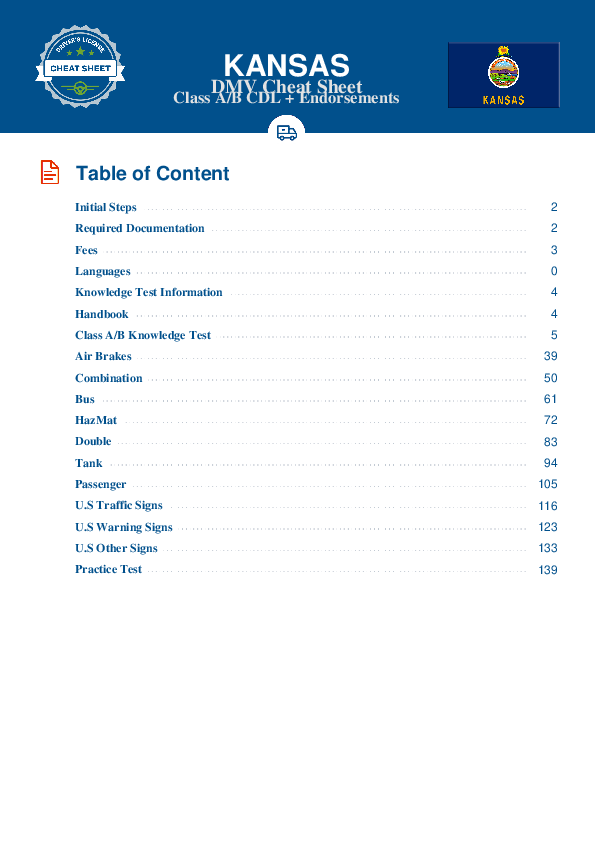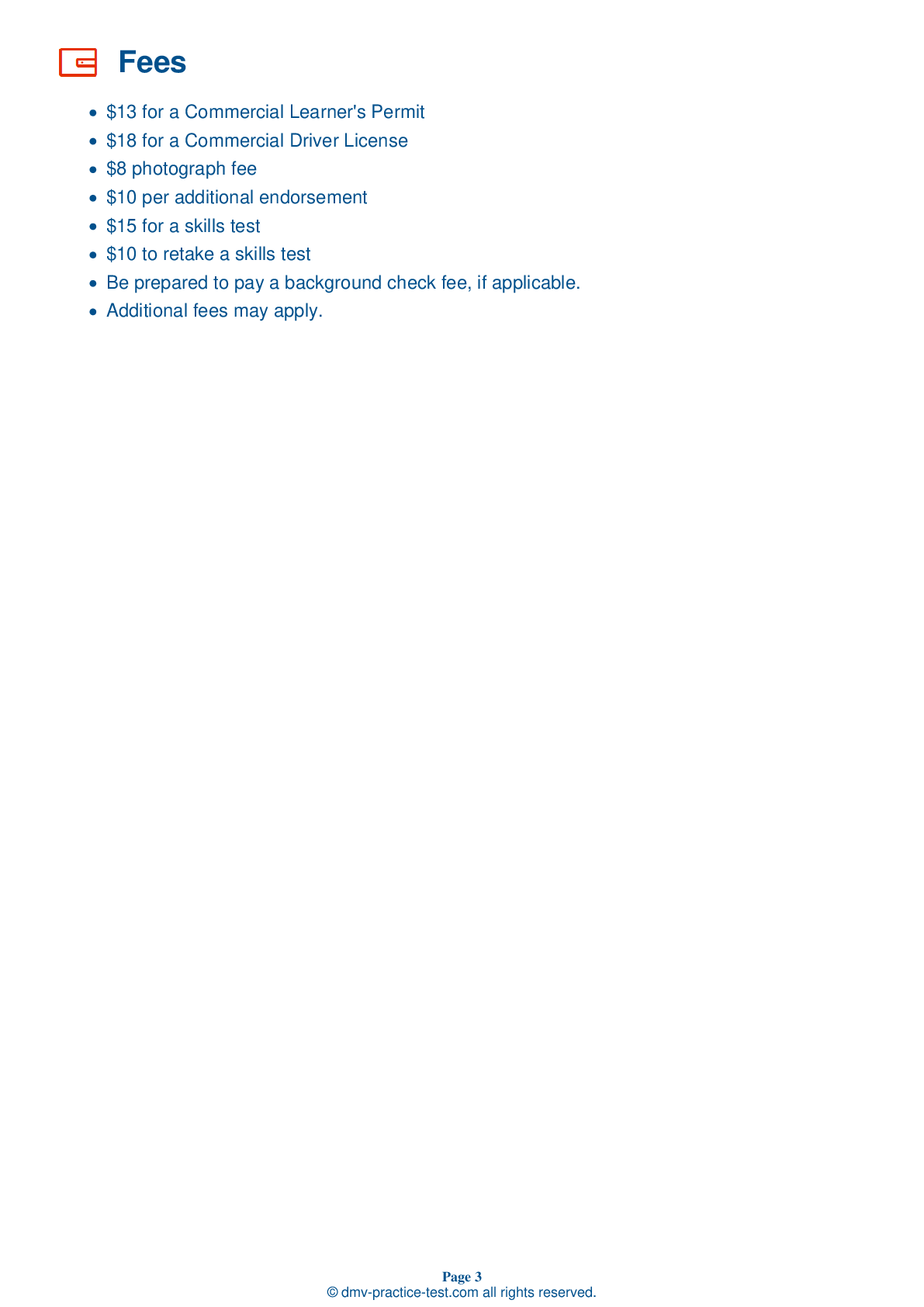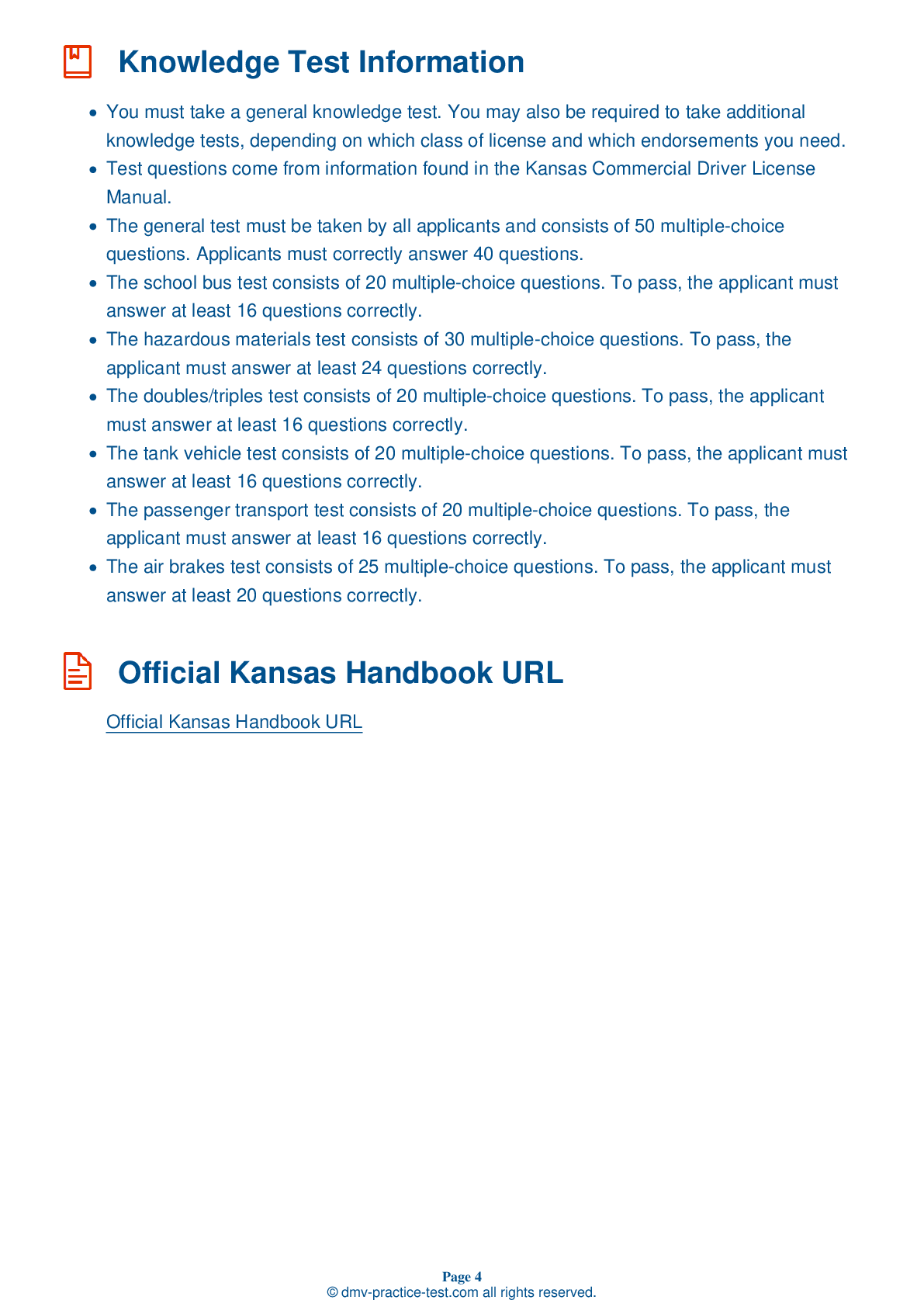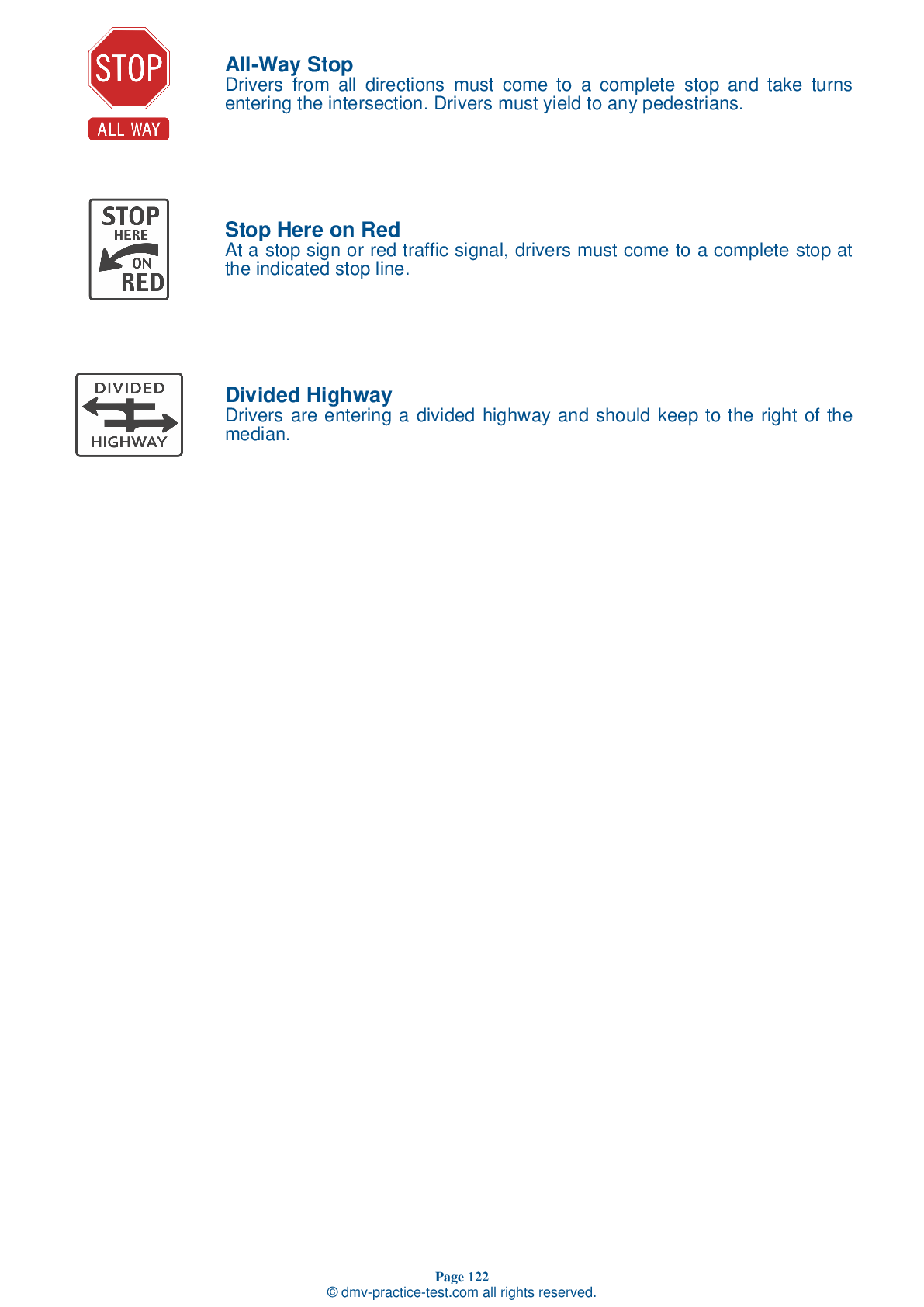HazMat #2
Hazmat Test | Kansas 2025 #2
On our website, we provide FREE practice - CDL hazmat test online! The official exam test consists of several obligatory parts, with all of them checking your knowledge of different blocks of road rules. If you need to obtain a KS CDL hazmat endorsement in 2025, practice as much as possible. Free sample tests published on our website will help you check and improve your knowledge and boost your grades. Please bear in mind that Kansas requirements for issuing a hazmat endorsement for CDL may vary from those established in other states.
30
24
20
1 . A driver should ensure that:
The shipping paper is not in the vehicle.
It is a good idea to compare a shipping paper to the applicable package markings and labels. Ensure that the shipper has included the correct basic description on the shipping paper and that it matches markings and labels.
2 . If you are transporting explosives and your vehicle breaks down, you may notify other drivers:
By keeping the driver's side door open.
If your vehicle breaks down on the road while you are transporting explosive materials, you must warn other drivers. Put out warning signals like reflective triangles or electric lights if you are carrying Division 1.1, 1.2, or 1.3 explosives. Do the same if you are driving a tank used to transport Class 3 flammable liquids or Division 2.1 flammable gases, even if the tank is empty. If transporting flammable materials, do not use warning signals that could cause your cargo to catch fire.
3 . When checking the springs during a vehicle inspection, do all of the following, except:
Glue cracked leaf springs.
When checking the springs as part of the vehicle inspection test, you should look for missing, shifted, cracked, or broken leaf springs, as well as broken or distorted coil springs. If the vehicle is equipped with torsion bars, torque arms, or other types of suspension components, ensure that they are not damaged and are mounted securely.
4 . Many products classed as poison are also:
Sweet-tasting.
Many products classed as poison are also flammable. Take the appropriate precautions if you think your cargo may be flammable.
5 . When checking tire condition during the vehicle inspection, you should:
Ensure that the tires have even wear.
When examining your tires during the vehicle inspection test, you should ensure that treads are evenly worn.
6 . How is a hazardous materials warning presented?
With flashing lights
Signs are placed on the outside of vehicles and bulk packages to warn drivers and others about hazardous materials. These diamond-shaped signs are known as "placards."
2025 Kansas | Frequently Asked Questions
A CDL Class A license in Kansas is defined as a commercial driver's license that permits the holder to operate any combination of vehicles with a gross vehicle weight rating (GVWR) of 26,001 lbs or more, given that the GVWR of the vehicle(s) being towed is over 10,000 lbs. This typically includes tractor-trailer combinations.
A Class A CDL license in Kansas allows the holder to operate tractor-trailers, truck and trailer combinations, tank vehicles, livestock carriers, and flatbeds. It's also required for driving any combination of vehicles with a Gross Vehicle Weight Rating (GVWR) of 26,001 lbs or more, where the towed vehicle is over 10,000 lbs.
To obtain a Class A CDL license in Kansas, you must be at least 18 years old (21 for interstate driving), possess a valid Kansas driver's license, pass a vision test, and complete a medical examination. You'll also need to pass written knowledge tests and skills tests, which include a pre-trip vehicle inspection, a basic vehicle control test, and an on-road driving exam.
In Kansas, you must be at least 18 years old to qualify for a Class A Commercial Driver's License (CDL) for intrastate driving (within Kansas only). However, you must be at least 21 years old if you plan to drive commercially across state lines (interstate driving).
Specific endorsements are not required for a Class A CDL license in Kansas, but they can enhance your driving privileges. For instance, endorsements for tanker vehicles (N), passenger vehicles (P), school buses (S), and hazardous materials (H) allow you to operate specialized vehicles. To get these endorsements, you must pass additional written and skills tests.
The Class A CDL skills test in Kansas encompasses three parts: a pre-trip inspection, a basic vehicle control test, and an on-road driving test. The tests assess your ability to inspect your vehicle before trips, control the vehicle in various situations, and drive safely in traffic. You must pass all three parts to get your Class A CDL license.
Yes, there can be limitations for Class A CDL license holders in Kansas. These are often referred to as restrictions and may include: not being able to operate a vehicle with air brakes (L restriction), only operating automatic transmission vehicles (E restriction), or only driving within Kansas (K restriction). These restrictions depend on the driver's skills and the type of vehicle used during the test.
In Kansas, the written Class A CDL test is primarily administered in English, as federal regulations require all commercial drivers to read and speak English sufficiently to converse with the general public, understand highway traffic signs and signals, and respond to official inquiries. However, it's best to contact your local DMV office for any language accommodations.
Yes, individuals with disabilities can request accommodations for the Class A CDL written test in Kansas. The Kansas Department of Revenue, Division of Vehicles is committed to providing equal access to its services. If you have a disability and need an accommodation, contact your local DMV office to discuss available options and requirements.
If you fail the Class A CDL written test in Kansas, you're allowed to retake it. However, you must wait until the next business day to do so. There's no limit on the number of times you can retake the test, but each attempt requires a new testing fee. It's advisable to study thoroughly before reattempting.



